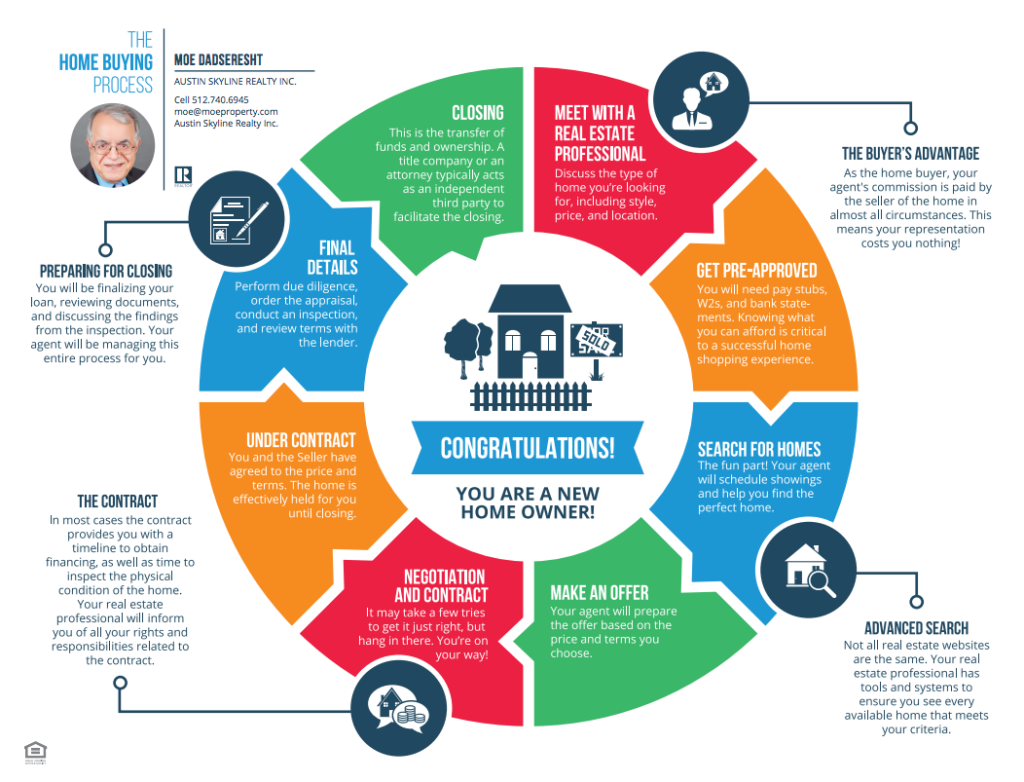As the single largest purchase of the lifetime for most people, buying a house requires careful preparation and planning. It taps into your financial resources and requires sticking to a timetable for the transaction. The home buying process, from the beginning to the end, could be distilled into the following Home Buying Checklist. Knowledge of the process and advance planning makes the whole process fun, specially if you are a first time buyer!
1 – Beyond the mechanics of contract offers and negotiation , you need someone on your team to guide you and look after your interest during the home buying process. Someone who looks beyond the current transaction for a long term relationship that may expand in the years to come. The truth is that, on the average, people change their residence every 7 years or so. This could be due to job change, moving up or a host of other reason. So, before you start your search for a house, find a real estate agent that you trust.
2 – Get pre-approved by a bank, credit union or a similar financial institution. This is an important, but often neglected step, in home buying process. You may ask why do I need approval before I have even started to look for a house. The answer is simply your peace of mind. To get pre-approved, you provide detailed information about your current financial status (income, current loans and other payments, etc.) to the bank. Based on that information, a determination is made about the mortgage amount you qualify. This gives you an idea about the price range for the houses you can ‘afford‘, thus limiting your search to that price range and prevent you from wasting time considering houses that are simply beyond beyond your financial reach.
Make sure that you explore all available financing options, including help with down payment. Travis county and the city of Austin have buyer’s help for qualified applicants in the form of 0% loan or outright grants. For more information about help with down payment visit here.
3 – You are now ready to start your search for a house. There are many well known resources for your search such as, Realtor.com, Zillow, Redfin, etc. You can also tap into the database of New Homes being built around Austin. Additionally, your agent can provide you access to the Multiple Listing Service (MLS), a database of available houses for sale in the area. MLS is the gold standard for houses on the market and it provide the most up-to-date data about the current houses for sale.
4 – When you find the house you like in your price range, it is time to make an offer. But for how much? How much the house is worth? Is the asking price fair, or is it high?
It is often said that the price of a house is not what the owner is asking. It is not what you think it is. It is not what the selling or the buying agent say it is. It is not what the neighbor think it is. In reality the true value of a house is what you or someone else would pay to own it. That price is determined by the market. How do you find what someone pays for the house you are considering to buy? The best way is, to find out how much people have paid for houses ‘similar‘ to the one you are considering.
Your agent can provide you with a Comparative Market Analysts (CMA) to compare recent sales of similar houses around the neighborhood and come up with an estimated value for the house. This should provide you a basis for your offer price and how much you end up paying for the house. This is often lower than the asking price, but on occasion (in a sellers market and a multiple offer situation) could end up being much higher than that asking price
The price is not the only term of an offer. Other condition and terms, and their associated costs, collectively called ‘closing costs‘ are all spelled out in a legally binding contract. Your agent can help you prepare this legal contract and ‘offer‘ it to the seller.
5 – Negotiation – Once your offer is presented, the owner can accept it, reject it , or change and return it back to you as a ‘counter offer‘. This can trigger new rounds of negotiation over the terms of contract and modify it back-and-forth until you and the seller agree to all the terms of the contract.
6 – Once the house is ‘under contact‘ there are certain time sensitive actions that are triggered after the last signature. Option period, inspection, securing financing, etc. are a few of these terms. You need to make sure the house is in good shape with the help of a professional inspector, finalize your financing qualification with your financial institution (the pre-approval saves you headache by speeding up this process and saving you time). Your bank orders appraisal, to make sure the house is worth to secure the loan amount. Details regarding status of the house as it is spelled out in title document is handled by the ‘title’ company.
7 – Closing – All the documents relating to the transaction and purchase of the house are funneled through the title company and the deal is finalized there. A date is set for the ownership transfer and ‘closing‘ of the deal. The final documents are signed, money exchanged, and you get the legal tile and at the shortly after the physical owner ship of the house. Congratulation you are a home owner now!
Each transaction is different and many have special situation to make it different and/or more challenging than others. If you have question about any of these steps please contact me.
Best wishes,


